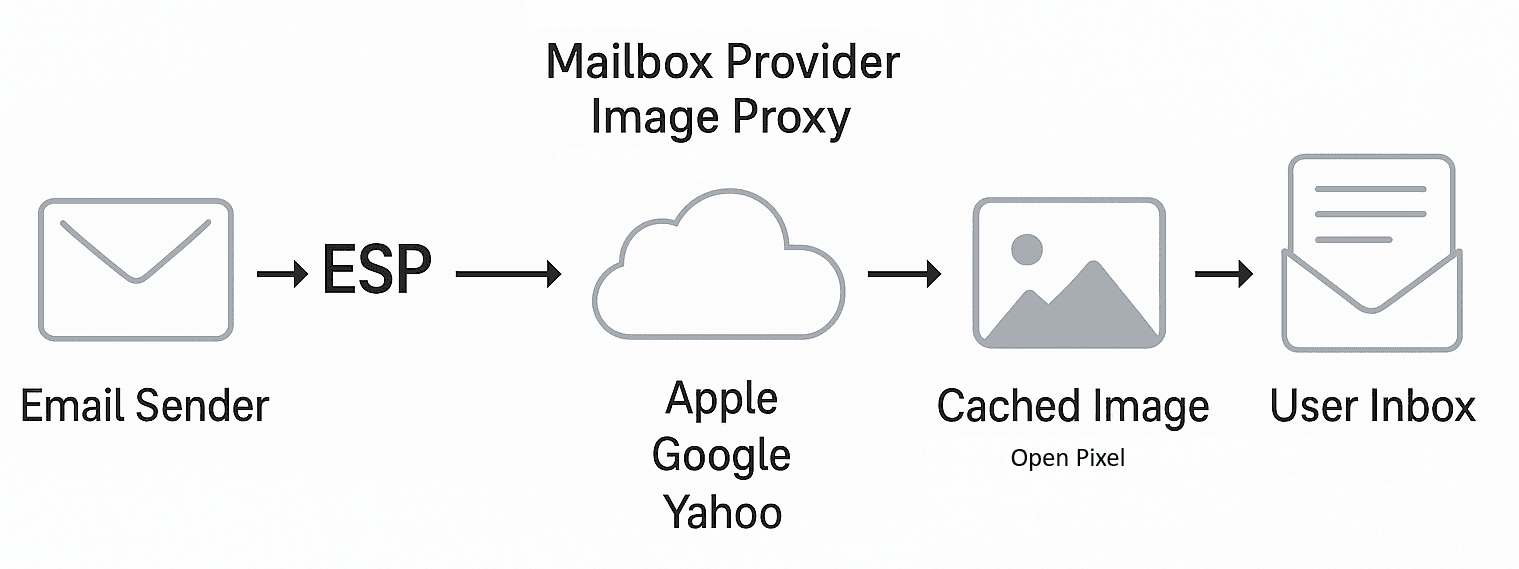Open rates used to be a dependable measure of engagement. You could tell who opened, when, and even where. Those days are long gone. Today, image caching and privacy proxies from Apple, Google, and Yahoo have blurred the picture, leaving marketers and deliverability pros searching for more trustworthy signals.
Why proxies exist
Apple shook things up in 2021 with the release of Mail Privacy Protection (MPP) for iOS 15. It was a direct response to growing privacy concerns, designed to mask user data. Since then, Google and Yahoo have expanded similar systems. These proxies protect consumers by hiding IP addresses, randomizing fetch times, and stopping brands from fingerprinting devices.
That’s good news for privacy, but bad news for your marketing metrics accuracy. Really were they ever that accurate though?
How image caching works
When a recipient opens an email, their client typically loads images from the sender’s server, including the invisible tracking pixel used to record an “open.” Privacy-focused mailbox providers now fetch those images in advance through their own servers, store them, and serve cached copies to users.
Think of it like a middle layer:

Once cached, the sender sees the proxy’s server fetching the image, not the user. No location data, no device information, and no real-time open.
The fallout for marketers
Cached images trigger “false opens,” often before anyone even reads the email. Open times are meaningless, geolocation data disappears, and metrics inflate across ESP dashboards. Some ESPs now filter out proxy-related opens, while others include them, creating inconsistent reports and trust issues across the industry.
For example, a re-engagement campaign might look like a success because Apple’s proxy opened everything. In reality, human engagement didn’t change at all.
Automation gone wrong
Open-based automations—like “resend to non-openers” or “trigger follow-up when opened”—have become risky. Cached opens can remove recipients from follow-up flows prematurely or misclassify inactive subscribers as active. Over time, that leads to segmentation drift, wasted sends, and potentially damaged sender reputation.
Opens as a deliverability proxy
Despite their flaws, open rates still offer value when viewed broadly. If your open rate across Gmail suddenly dips while Yahoo remains steady, that could hint at a deliverability issue. Domain-level consistency can still serve as a general health indicator, but never as a definitive KPI.
Moving metrics down-funnel
Clicks, conversions, replies, and web behaviour now tell the real story. These verified interactions offer stronger insight into audience engagement and intent. Shifting focus from opens to outcomes aligns measurement with actual business impact.
Checklist: Using open data responsibly
- ✅ Use open trends only for high-level analysis.
- ✅ Prioritize clicks, conversions, and retention over vanity metrics.
- ✅ Compare opens across domains for deliverability insights.
- ❌ Avoid automation triggers based on opens alone.
- ❌ Don’t treat opens as proof of human engagement.
Open rates aren’t dead, but they’re unreliable at best. Move with caution, combine multiple data points, and let real engagement—not cached pixels—guide your strategy.


